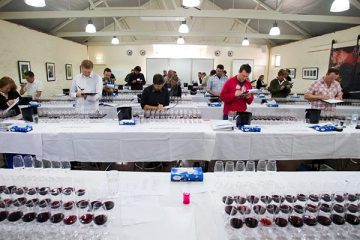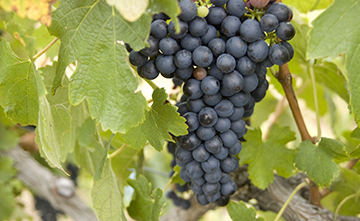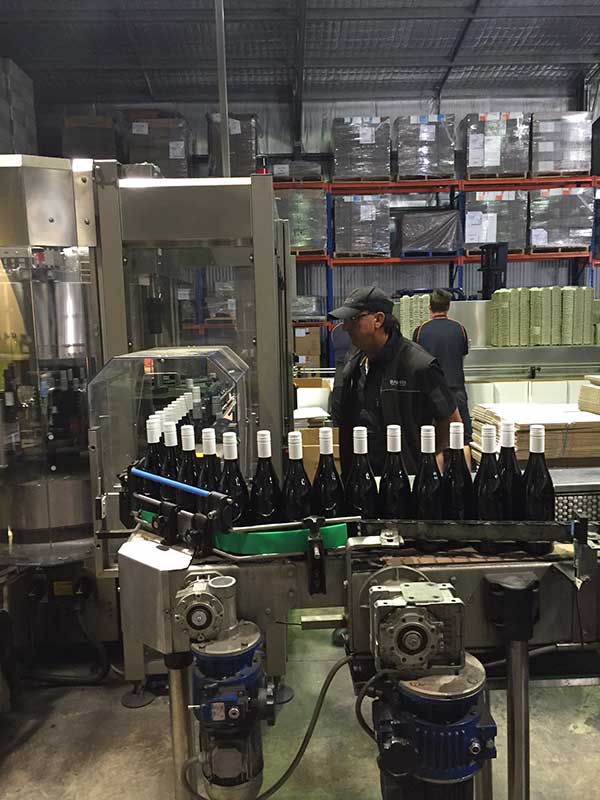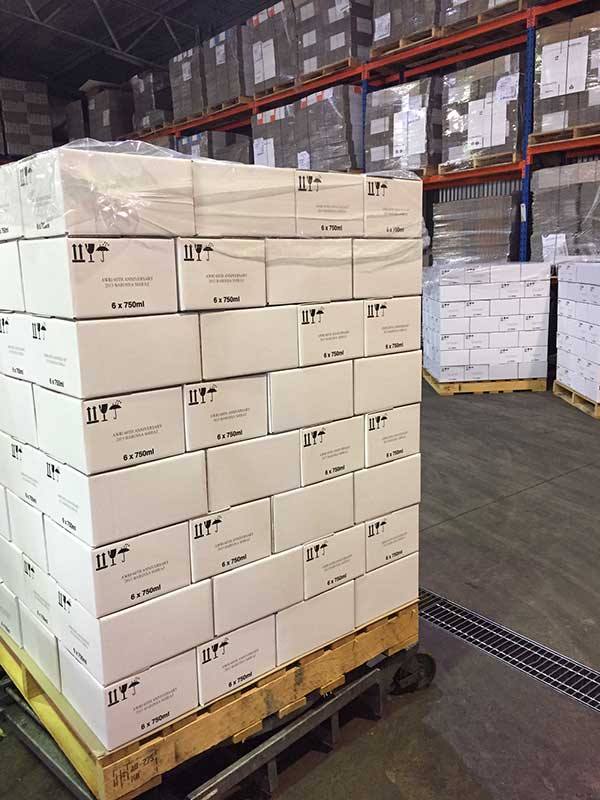Discovering the microbial diversity in Indigenous Australian fermentations
New grants available to help improve energy efficiency
Managing powdery mildew-affected fruit in the winery
Partnering in a new Cooperative Research Centre
Is your bentonite up to the task?
Pre-fermentation heating of red grapes
Science and Innovation Award winner
Order the latest AWRI staff publications online
Discovering the microbial diversity in Indigenous Australian fermentations |
|
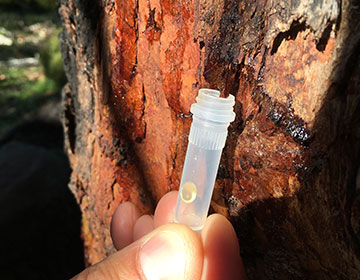 |
AWRI and University of Adelaide researchers are working together to investigate the microbes involved in the fermented beverages and foods traditionally produced by some Indigenous Australian peoples. In addition to uncovering the diversity in the microbial communities associated with these fermentations, there is potential to discover novel microorganisms unique to Australia which may possess interesting properties and could be applied in modern Australian food or wine production.
AWRI Senior Research Scientist Cristian Varela recently travelled to the Central Highlands region of Tasmania as part of the project team and collected samples of sugar-rich sap from the cider gum (Eucalyptus gunnii), known to be the raw material for production of the traditional fermented drink way-a-linah. Soil and bark samples were also collected. Microbes present in these samples will be isolated and characterised using metagenomic techniques. Further work will assess the fermentation properties of the isolated microbes. In other elements of the project, University of Adelaide researchers will consider historical and anthropological aspects of the production of these fermented foods and beverages and will investigate the composition of saps, nectars and other fermentation substrates. |
New grants available to help improve energy efficiencySeveral state government departments are currently offering heavily subsidised energy audits to businesses to help identify and implement opportunities to reduce energy use. The type of audits offered under these programs are sufficiently detailed to investigate process efficiency, which can bring a range of benefits in addition to reduced electricity costs. For both vineyards and wineries, energy audits provide a great opportunity to explore practice change and new technology options. An energy audit can investigate the applicability of solar and other renewable energy options, as well as battery storage technologies which are a rapidly evolving area. Information about the various state government programs can be found at the following links.
AWRI Commercial Services has a wealth of experience in conducting energy audits and identifying ways to reduce energy usage in winemaking and viticulture. Contact the team on 08 8313 6600 or commercialservices@awri.com.au to find out how to access these programs and to discuss the supporting grants that are available. |
|
Managing powdery mildew-affected fruit in the winery |
|
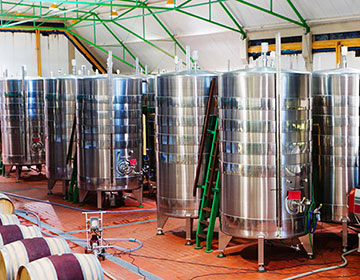 |
With overcast and damp conditions over much of Australia this summer, some vineyards have been affected by powdery mildew. While powdery mildew is generally managed in the vineyard with fungicide sprays, once veraison commences, control options using fungicides reduce considerably. If harvested fruit shows signs of powdery mildew infection, there are steps that can be taken in the winery to best manage the fruit and minimise any sensory effects. The helpdesk team has recently put together a new fact sheet ‘Managing powdery mildew in the winery’ to provide advice on this issue. For more information, contact the AWRI helpdesk on mailto:helpdesk@awri.com.auor 08 8313 6600. |
Partnering in a new Cooperative Research CentreEarlier this month the Minister for Industry, Innovation and Science Senator the Hon. Arthur Sinodinos AO announced that a new Cooperative Research Centre, the Food Agility CRC, will be funded with $50m over ten years. The overall goal for this CRC is to empower Australia’s food industry to grow its comparative advantage through digital transformation. The CRC bid was led by the Knowledge Economy Institute at the University of Technology Sydney (UTS), together with QUT and Curtin University. The AWRI is a partner in the CRC and this partnership will focus on activities that increase the value of the Australian wine industry’s sustainability program, Entwine, including:
Details of these activities will be confirmed over the next couple of months, and work is expected to begin on 1 July 2017. |
|
Is your bentonite up to the task?AWRI Commercial Services is running a performance benchmarking trial for commercial bentonite products and is looking for expressions of interest from both wine producers and suppliers. The focus of the trial will be the changes in metal concentrations seen in white wines treated with different types of bentonites and the influence of wine properties on the bentonites’ performance characteristics. For more information about the trial or to register interest, please contact AWRI Commercial Services on CommercialServices@awri.com.au. Trial background A recent AWRI study showed that different commercial bentonite products have the potential to affect the speed of clarification, flocculation of lees and transfer of metals, both into and out of wine during stabilisation. They can also have a significant impact on wine aroma and flavour. The upcoming trial will benchmark the effectiveness of bentonite products in achieving protein stabilisation for commercial white wines. Key performance indicators will include:
Sensory evaluation of the treated wines will also be carried out to determine the impact of the different bentonites on key flavour and aroma attributes. The trial is expected to commence in April and wrap up by September. |
|
Pre-fermentation heating of red grapesPre-fermentation heating of red grapes can greatly speed up the extraction of skin colour, meaning less time required on skins and reduced demand on expensive red fermenters. It can also be used to denature laccase, remove ‘green’ aromas, and produce different red wine styles. A recent article that reviewed this practice, published in Australian & New Zealand Grapegrower & Winemaker, is now available from the AWRI website. |
|
Science and Innovation Award winner |
|
| AWRI Research Scientist Natoiya Lloyd was announced this month as the winner of one of the 2017 Science and Innovation Awards for Young People in Agriculture, Fisheries and Forestry. These awards recognise ideas from young innovators that contribute to the success of Australia’s agriculture sector. Natoiya received the award for oenology and viticulture, sponsored by Wine Australia, and will use her award grant to undertake a project applying advanced analytical techniques to detect smoke taint in wine. Congratulations Natoiya! | |
Crush 2017 – save the date!The next Crush symposium will be held at the Waite Campus in Adelaide on 13 and 14 November 2017. This event provides an opportunity for researchers, technical staff, academics and students to share the latest knowledge in grape and wine science in Australia and develop industry and research collaborations. The program and abstracts from the previous Crush symposium can be viewed here. For more information, visit the Crush 2017 homepage or contact the WIC Executive Officer, Francesca Blefari, on wiceo@awri.com.au. Expressions of interest to present at Crush 2017 will open shortly. |
|
New eBooksFive new eBooks have recently been added to the AWRI’s collection, with topics covering wine tasting, Zinfandel, grapevine yellows diseases and Californian wine regions. To review the latest titles, visit the AWRI website and select from one of the two available eBook platforms. For further information on using the collection, please consult the online guides or contact the AWRI information services team. |
|
Order the latest AWRI staff publications onlineAccessing the latest AWRI publications is easy. Visit the AWRI Publications web page to:
A full list of AWRI publications published since the last eNews is included below: 1883 Longbottom, M. Ask the AWRI: Grapevine tissue analysis. Aust. N.Z. Grapegrower Winemaker (635): 36-37; 2016. 1884 Johnson, D. 2016 Report: Progress and impact. Aust. N.Z. Grapegrower Winemaker (635): 56-59; 2016. 1885 Abbott, T. AWRI Ferment Simulator joins the cloud. Aust. N.Z. Grapegrower Winemaker (635): 72-73; 2016. 1886 Coulter, A. Ask the AWRI: Understanding molecular SO2. Aust. N.Z. Grapegrower Winemaker (636): 76; 2017. 1887 Goold, H.D., Kroukamp, H., Williams, T.C., Paulsen, I.T., Varela, C., Pretorius, I.S. Yeast’s balancing act between ethanol and glycerol production in low-alcohol wines. Microb. Biotechnol. 10(2): 264-278; 2017. 1888 Culbert, J.A., McRae, J.M., Condé, B.C., Schmidtke, L.M., Nicholson, E.L., Smith, P.A., Howell, K.S., Boss, P.K., Wilkinson, K.L. Influence of production method on the chemical composition, foaming properties, and quality of Australian carbonated sparkling white wines. J. Agric. Food Chem. 65(7): 1378-1386; 2017. 1889 Bindon, K., Kassara, S., Smith, P.A. Towards a model of grape tannin extraction under wine-like conditions: the role of suspended mesocarp material and anthocyanin concentration. Aust. J. Grape Wine Res. 23(1): 22-32; 2017. 1890 Li, S., Bindon, K., Bastian, S.E.P., Jiranek, V., Wilkinson, K.L. Use of winemaking supplements to modify the composition and sensory properties of Shiraz wine. J. Agric. Food Chem. 65(7): 1353-1364; 2017. 1891 Longbottom, M. Advanced Wine Assessment Course scholarship, wine show judge register and Mildura seminar. Wine Vitic. J. 32(1): 10; 2017. 1892 Longbottom, M., Robinson, E., Johnson, D. Building resilience in the face of a changing climate. Wine Vitic. J. 32(1): 32-34; 2017. 1893 Dry, P. Harslevelu. Wine Vitic. J. 32(1): 59; 2017. 1894 Parker, M., Capone, D.L., Francis, I.L., Herderich, M.J. Aroma precursors in grapes and wine: flavor release during wine production and consumption. J. Agric. Food Chem. DOI: 10.1021/acs.jafc.6b05255; 2017. 1895 Hunter, A., Dayalan, S., De Souza, D., Power, B., Lorrimar, R., Szabo, T., Nguyen, T., O’Callaghan, S., Hack, J., Pyke, J., Nahid, A., Barrero, R., Roessner, U., Likic, V., Tull, D., Bacic, A., McConville, M., Bellgard, M. MASTR-MS: a web-based collaborative laboratory information management system (LIMS) for metabolomics. Metabolomics 13(2): 1-9; 2017. 1896 Petrie, P. Ask the AWRI: Assessing and managing disease levels close to harvest. Aust. N.Z. Grapegrower Winemaker (637): 32-33; 2017. 1897 Nordestgaard, S. Pre-fermentation heating of red grapes: a useful tool to manage compressed vintages? Aust. N.Z. Grapegrower Winemaker (637): 54-58; 2017. 1898 Stockley, C.S. Taylor, A.W., Montgomerie, A., Dal Grande, E. Changes in wine consumption are influenced most by health: results from a population survey of South Australians in 2013. Int. J. Wine Res. 9: 13-22; 2017. 1899 Mierczynska-Vasilev, A., Smith, P.A. Adsorption of wine constituents on functionalized surfaces. Molecules 21(10):1394; 2016. |
|
AcknowledgementThe AWRI acknowledges support from Australia’s grapegrowers and winemakers through their investment body, Wine Australia, with matching funds from the Australian Government. The AWRI is a member of the Wine Innovation Cluster in Adelaide, South Australia. |
|



